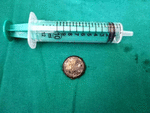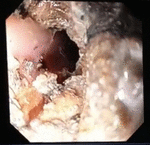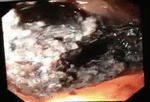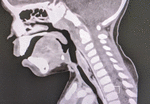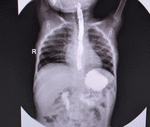Introduction
Emergency care is an integral part of any discipline of clinical medicine. Foreign bodies (FB) in ear, nose, and throat (ENT) are emergencies usually seen by otorhinolaryngologists, pediatricians, primary care setting, emergency department physicians (1). Foreign bodies account for ∼ 11% of the cases of ENT emergency services (2–4). If not appropriately managed, they have a high potential for morbidity and mortality (5, 6).
The presentation and management of foreign bodies vary not only in different populations but also among different age groups (7–9). Generally, ENT FBs are more common in young children. Successful removal depends on a variety of parameters, including the location of the FB, its composition, the technology available, and patient participation (10).
In recent years, with the increasing accessibility of electronic toys and devices to youngsters, ingestion of miniature-sized button batteries has risen. These represent a particular group of pediatric swallowed foreign bodies due to the danger of potentially catastrophic complications if not removed early. Injury can occur through four mechanisms: (1) pressure necrosis; (2) alkali created from external currents; (3) mercury toxicity, and (4) electrolyte leakage from batteries. A case report of button battery ingestion is presented in this paper.
Methods
A one-year-old child was brought, with accidental ingestion of button battery 16 h before, after two removal attempts elsewhere with flexible endoscopy. The child was brought with complaints of noisy breathing and refusal of feeds. X-ray of the chest with abdomen (Figures 1, 2) showed a one-rupee-coin-sized battery with “double ring” or “halo” sign at the level of the cricopharynx.
An immediate rigid esophagoscopy was done and deformed leaking battery was seen adherent to the cricopharyngeal wall (Figure 3).
After removal, there was circumferential blackish slough with ulcer from 12 to 15 cm level of the esophagus (Figures 4, 5).
Under flexible esophagoscopy, Ryle’s tube was secured. The child was started on broad-spectrum IV antibiotics and Ryle’s tube feed. The child had persistent low-grade fever. CT chest with abdomen (Figure 6) was done to rule out mediastinitis, which revealed normal study, with inflammatory enhancement in posterior pharyngeal wall, at the level of the pyriform fossa and cricopharynx.
On day 5, Stamm’s Feeding gastrostomy was done by the pediatric surgery team. Recovery was uneventful.
On follow-up day 25, barium swallow showed no leakage or stricture formation (Figure 7).
Day 45 follow-up upper gastrointestinal scopy revealed short segment stricture formation ∼3 mm. Endoscopic and fluoroscopic guided balloon dilatation was done, using 8 mm balloon by the medical gastroenterology team.
Results and discussion
The child is thriving well and is being regularly followed up.
The button battery, which is commonly used in the manufacture of calculators, hearing aids, watches, and other portable electronic devices, can cause a wide range of complications if not removed at the earliest. Symptoms caused by button battery consumption are vague and are also observed in common disorders such as viral infections (11). If the button battery is stuck in the aerodigestive tract, as in this case, urgent removal is mandatory, regardless of diameter, and the presence of symptoms (12–14). After removal, the state of esophageal mucosa in contact must be assessed for complications. Removal is tough due to irritation, necrosis, and adherence with its surrounding tissues. Button batteries can cause serious mucosal injuries within 2 h of ingestion (15). Following removal, follow-up radiography must be conducted at regular intervals to avoid the development of late problems, which may be silent initially (16). A case of a 2-year-old child who died due to massive bleeding from an esophageal-aortal fistula 18 days after button battery removal has been reported (17).
Conclusion
Increased marketing and use of lithium cells have contributed to an increase in occurrences of button battery ingestion. The progression of harm is the hallmark of button battery impaction. Complications include tracheal and esophageal stenosis, spondylodiscitis, perforations, empyema, vocal cord paralysis, tracheo-esophageal fistula, aorto-esophageal fistula, mucosal burns, stricture & death (18–21). Clinicians must do their utmost in early removal, be mindful of delayed problems, and treat them when they arise. Afterall, prevention needs to be the prime goal.
The purpose of this paper is to raise awareness about the serious consequences caused by button battery impaction in youngsters. We recommend that national standards include the course of action after button battery ingestion.
Data availability statement
Any data that support the findings of this study are included within the article.
Ethics statement
Ethical committee clearance has been obtained from the author’s institution.
Author contributions
KK: conceptualization; data curation; methodology; writing, reviewing, and editing. AD: formal analysis and project administration. SP: project administration and supervision. MS: data curation; writing the original draft, reviewing, and editing.
Funding
The authors have no funding to report.
Acknowledgments
We would like to express our gratitude to the patient and his family members.
Conflict of interest
The authors have no conflict of interest to report.
References
1. Thompson SK, Wein RO, Dutcher PO. External auditory canal foreign body removal: management practices and outcomes. Laryngoscope. (2003) 113:1912–5. doi: 10.1097/00005537-200311000-00010
2. Figueiredo RR, Azevedo AA, Kós AO, Tomita S. Complications of ENT foreign bodies: a retrospective study. Rev Bras Otorrinolar Ingol (Engl Ed). (2008) 74:7–15. doi: 10.1016/s1808-8694(15)30744-8
3. Silva BSR, Souza LO, Camera MG, Tamiso AGB, Castanheira LVR. Foreign bodies in otorhinolaryngology: a study of 128 cases. Int Arch Otorhinolaryngol. (2009) 13:394–9.
4. Bressler K, Shelton C. Ear foreign-body removal: a review of 98 consecutive cases. Laryngoscope. (1993) 103(4 Pt 1):367–70. doi: 10.1002/lary.5541030401
5. Yuca K, Yuca SA, Caksen H. Aural live foreign bodies in children. J Emerg Med. (2003) 25:102–4. doi: 10.1016/s0736-4679(03)00123-9
6. Ansley JF, Cunningham MJ. Treatment of aural foreign bodies in children. Pediatrics. (1998) 101(4 Pt 1):638–41. doi: 10.1542/peds.101.4.638
7. Nandi P, Ong GB. Foreign body in the oesophagus: review of 2394 cases. J Br Surg. (1978) 65:5–9. doi: 10.1002/bjs.1800650103
8. Crysdale WS, Sendi KS, Yoo J. Esophageal foreign bodies in children 15-year review of 484 cases. Ann Otol Rhinol Laryngol. (1991) 100:320–4. doi: 10.1177/000348949110000410
9. Ngan JH, Fok PJ, Lai EC, Branicki FJ, Wong JO. A prospective study on fish bone ingestion. Experience of 358 patients. Ann Surg. (1990) 211:459. doi: 10.1097/00000658-199004000-00012
10. Heim SW, Maughan KL. Foreign bodies in the ear, nose, and throat. Am Fam Phys. (2007) 76:1185–9.
11. Jatana KR, Litovitz T, Reilly JS, Koltai PJ, Rider G, Jacobs IN. Pediatric button battery injuries: 2013 task force update. Int J Pediatr Otorhinolaryngol. (2013) 77:1392–9. doi: 10.1016/j.ijporl.2013.06.006
13. Krom H, Visser M, Hulst JM, Wolters VM, Van den Neucker AM, de Meij T, et al. Serious complications after button battery ingestion in children. Eur J Pediatr. (2018) 177(7):1063–70. doi: 10.1007/s00431-018-3154-6
14. Matthews TE, Benninga MA, Taminiau JA, Tabbers MM, Koot BGP, Kindermann A. Ingestie van corpora aliena op de kinderleeftijd. Tijdschr Kindergeneeskd. (2009) 77:139–47. doi: 10.1007/BF03086380
15. Litovitz T, Whitaker N, Clark L, White NC, Marsolek M. Emerging battery-ingestion hazard: clinical implications. Pediatrics. (2010) 125:1168–77. doi: 10.1542/peds.2009-3037
16. Namasivayam S. Button battery ingestion: a solution to a management dilemma. Pediatric Surg Int. (1999) 15:383–4. doi: 10.1007/s003830050605
17. Brumbaugh DE, Colson SB, Sandoval JA, Karrer FM, Bealer JF, Litovitz T, et al. Management of button battery-induced hemorrhage in children. J Pediatr Gastroenterol Nutr. (2011) 52:585–9. doi: 10.1097/MPG.0b013e3181f98916
18. Simonin M, D’Agostino I, Lebreton M, Jughon O, Hamza J, Oualha M. Bilateral vocal palsy following coin cell lithium battery ingestion: a case report and review. Eur J Pediatr. (2013) 172:991–3. doi: 10.1007/s00431-012-1899-x
19. Kieu V, Palit S, Wilson G, Ditchfield M, Buttery J, Burgner D, et al. Cervical spondylodiscitis following button battery ingestion. J Pediatr. (2014) 164:1500–1500.e1. doi: 10.1016/j.jpeds.2014.02.016
20. Ettyreddy AR, Georg MW, Chi DH, Gaines BA, Simons JP. Button battery injuries in the pediatric aerodigestive tract. Ear Nose Throat J. (2015) 94:486–93. doi: 10.1177/014556131509401207


